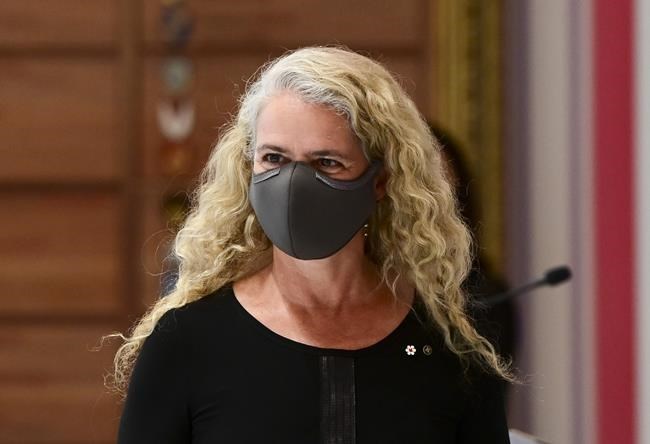TORONTO — In the wake of Julie Payette's resignation from the role of governor general on Thursday after an investigation into harassment allegations, some Canadian workers may find themselves relating to the rank and file at Rideau Hall.
In many cases however, workers who have the courage to complain about mistreatment from their managers find all too often that their boss doesn't face any consequences, notes human resources consultant Janet Candido.
"If it's somebody that nobody likes, or if it's a fairly low-level person, companies are usually much more apt to take action," says Candido, founder of Candido Consulting Group.
"The problem really comes in when the person is very senior, or popular, or a good producer. And then people turn a blind eye."
Candido says that any employee experiencing bullying should take detailed notes about each clash, including the day, time and whether there were any witnesses. Workplaces should focus on anti-harassment training that empowers managers from other departments to step in when they see a fellow manager bully a subordinate, she says.
"Don't expect a subordinate to be able to stand up to their boss and say, 'You are harassing me and haven't stopped,' she says. "They're afraid of being ostracized. They're afraid of their career being finished."
Many workplace policies, however, do exactly that, says Fredericton employment lawyer Dan Leger. Most workplaces are required to have policies to deal with harassment, but many vary in how they define harassment or require employees to start with informal discussions.
"It all starts with confirming to the individual that behaviour is not welcomed," says Leger. "We all know what it looks like, at the far end: If somebody's making a sexual advance to a subordinate employee, that's easy to classify. But what about the employer or the boss or the manager who decides to shun an individual in the copy room?"
Leger says workplace policies are often designed to mediate and diffuse disputes without ever reaching the point where investigators are called in. A good policy, Leger says, includes at least one backup mediator if an employee cannot safely complain to the manager.
"That's not uncommon in workplaces: A boss might have an employee in the management team that they've worked with, that they go camping with, and employees know that," says Leger. "If you can't go to your immediate supervisor, then who is the default after that, and who was the default after that?"
Leger says any workplace policy should also have a clause that protects good-faith complainants from retaliation. If violated, that could be a violation of a work contract — and entitle the employee to monetary damages, Leger says.
Ottawa lawyer Yavar Hameed says more workers have reported feeling isolated and vulnerable to difficult employers during the COVID-19 pandemic. Hameed says that there are several different routes of recourse for workers who are being bullied. For example, a unionized workplace may allow an employee to file a grievance.
If an employer request is unlawful, discriminatory or a threat to health and safety, Hameed says that merits workers raising an instant alarm, and can open the door to the province's human rights tribunal or Ministry of Labour. A traumatic workplace incident that ends in a diagnosis of post-traumatic stress disorder means that an employee now has a medical condition that must be accommodated by the employer, Hameed says.
On the other hand, if a workplace is proven to be so toxic that a worker is impeded in carrying out their duties, Hameed says an employee could try to build a legal case for constructive dismissal, sometimes called "quitting with cause."
But each legal option has its risks, Hameed says, as does the option of "going public" with complaints without having a lawyer or union to advocate for you.
"The caveat for all of these kind of interventions is that legal processes are long and drawn out," says Hameed.
"The danger of going public with something is ... you have to have the confidence that then you will be able to weather a vigorous response by the employer."
When harassment is between two co-workers, the worker on the receiving end should make a complaint to management requesting protection, says Hameed.
"The liability of management is triggered when you let management know that this co-worker is harassing you, and they just condone that behaviour," he says.
What's tougher, he said, is when management is accused of abuses. Hameed says workplace complaints are more likely to be investigated if there are multiple employees willing to come forward with similar experiences — which, he admits, is easier said than done.
"Even if there's a group of them, they may still not feel that they have that safety," says Hameed. But, he adds, when it comes to a group complaint, "in most circumstances, it would be highly imprudent of management to just sort of whitewash that or dismiss that."
This report by The Canadian Press was first published Jan. 22, 2021.
Anita Balakrishnan, The Canadian Press

